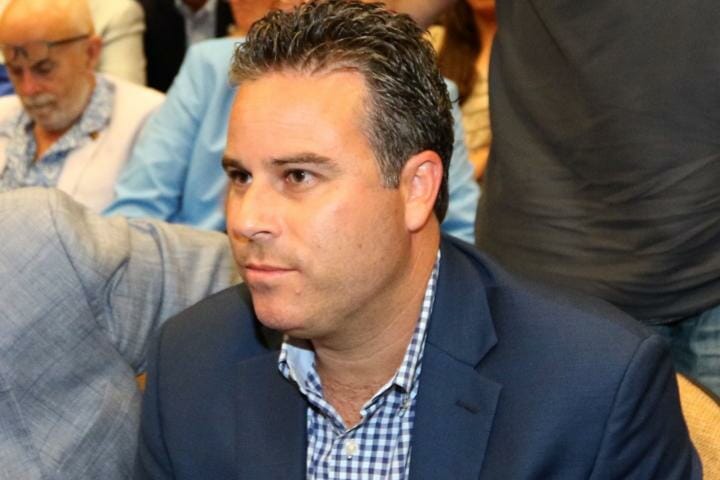
Q&A: Eclipse’s Aron Wellman Talks 2yo Sales
By Steve Sherack
 Eclipse Thoroughbred Partners frontman Aron Wellman sat down for a Q&A session with TDN Senior Editor Steve Sherack ahead of this week’s OBS March 2yo Sale. Wellman talks about his process at the breeze-up sales, freshman sires to keep an eye on and his favorite places to head to after a long day at the sales in Ocala. Two of Eclipse’s GISWs–Capo Bastone and Illuminant–are graduates of the OBS March Sale.
Eclipse Thoroughbred Partners frontman Aron Wellman sat down for a Q&A session with TDN Senior Editor Steve Sherack ahead of this week’s OBS March 2yo Sale. Wellman talks about his process at the breeze-up sales, freshman sires to keep an eye on and his favorite places to head to after a long day at the sales in Ocala. Two of Eclipse’s GISWs–Capo Bastone and Illuminant–are graduates of the OBS March Sale.
Q: Take us through your process (shortlisting, watching breeze videos, etc.) while shopping the 2-year-old sales.
AW: The process itself all starts with the breeze. At the 2-year-old sales you have the luxury of seeing these horses in full stride, so how they breeze and gallop out is of paramount importance. The time has to be solid, but it’s the manner in which the horse conducts the breeze that matters the most. The efficiency of the horse’s stride and its body language as to whether it was all-out to do what it did or if it appears there may be more gears than were on display in this abbreviated workout are significant factors that we try really hard to decipher.
Once we’ve wrapped our head around what we see on the racetrack, we then turn to the video replays. This means video of both the body of the workout and the gallop-outs, which provide valuable information and vantage points. This is a huge part of the process and really where you do your best to pick up on certain nuances that may turn you off a particular horse or when you try to pick up on details that may help explain why a horse didn’t breeze as fast as you’d like to see, but you believe there is more than meets the eye. A lot of times what you see is what you get, and the reality is that we’re going to be wrong a lot more than we’re right, but once in a while you stumble across something that catches your eye that turns to gold.
Then, of course, you assess each prospect on the shank. We spend hours during the inspection days analyzing every horse in the flesh to size it up physically from a conformation perspective and to see how it has emerged from its breeze in terms of soundness and to determine what sort of mental constitution the horse possesses. If the horse qualifies by virtue of its breeze and then jumps through the hoops upon physical inspection, then and only then does pedigree come into play.
As this process plays out, you’re naturally whittling down your list of prospects at every phase, and since so many of these horses are being pinhooked, it then behooves us to consult with prior sales prices. This allows for us to get a gauge on what sort of price the owner of that horse may be looking to achieve.
After all of this happens, we turn to our vets to tell us what these animals look like underneath the hood. Vetting is the most tricky part of the process and it can be the most frustrating as well because it is very common for a good percentage of our top draft picks to be nixed by the vet. You walk a fine line when it comes to vetting and there’s often a lot of gray area, but we tend to err on the side of caution.
Once a horse has survived this long, tedious process, it’s time to establish a value and do whatever we can to hammer down that horse when it goes through the ring. As Bill Shoemaker always used to tell me, “You lose your head and your ass goes with it.” I try to keep Shoe’s words in my mind every time we go to bid on a horse.
Q: Do you target specific types of horses at the 2-year-old sales?
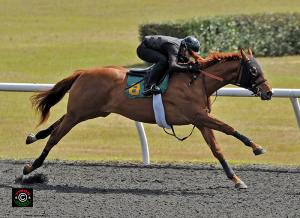 AW: We’re on the hunt for athletes, so there’s no “type” of horse we’re concentrating on, simply horses we believe have the ability to compete at the highest level.
AW: We’re on the hunt for athletes, so there’s no “type” of horse we’re concentrating on, simply horses we believe have the ability to compete at the highest level.
Q: How big is your scouting team and who are some of the people that help you evaluate talent?
AW: At Eclipse, while all ultimate decisions about which horses we acquire rests on my shoulders, it is a team effort and I have a terrific team on my side and everyone plays a role. Gary Young has clocked horses for me at the 2-year-old sales since Eclipse first started working the sales in 2012. I’m more of a visual guy and really rely on my eye and my gut, so having Gary’s fingers on the stopwatch is huge. Jacob West has joined our team in the past year and he’s a star and does it all. He’ll be clocking, inspecting and acting as another valuable set of eyes and ears for me in all respects. Kelsey Marshall is my right-hand woman at all sales and she keeps me organized and focused and she’s developed quite a fine intuition when it comes to the animal, and if juggling me isn’t enough, she also manages to provide first-class attention to our partners.
Jack Sadler was Cot Campbell’s main guy at Dogwood for a few decades and is a real jack-of-all-trades. His help in showing partners the ropes who may be attending the sales is instrumental. Bill Victor, our CFO, was Dogwood’s treasurer forever and he keeps our eye on the ball from a dollars and cents perspective.
And, my business partner, Brian Spearman, is the wind in our sail. He has incredible energy and a voracious appetite for the sport and he keeps an eye on all the business components so I can hone-in on the horses.
Q: Are there certain defects or flaws that you can live with that others may pass on at the 2-year-old sales?
AW: In general, we tend to be more forgiving at the 2-year-old sales than we would be in buying a yearling or a weanling, simply because you have had the opportunity to see the horse in motion at a high rate of speed and you know that the horse in question has already gotten through this demanding and stressful process from a physical and mental perspective. That said, there is no such thing as a perfect horse. Every horse has flaws.
If I had to specify one general concept, when it comes to fillies in particular, I am very open-minded about smallish or slight fillies. Some of the best fillies Eclipse has campaigned have been on the small side and turned a lot of buyers off at the sales we plucked them from, but they went on to achieve top-shelf success and it didn’t really hold back buyers from paying top dollar when the time came to sell them as broodmare prospects.
Q: Two of Eclipse’s Grade I winners-‘TDN Rising Star’ Capo Bastone ($175,000 OBSMAR) and Illuminant ($180,000 OBSMAR)–were both purchased as OBS March 2-year-olds. Can you reflect on their breezes and what led you to them?
AW: Capo Bastone was a powerhouse in his [:10 1/5] breeze at OBS. He had incredible thrust, and for a big horse, he was incredibly well-balanced and rhythmic with every stride. On the shank, he was a beast. He was an absolute must-have colt for me at the time and he turned out to be the first ever 2-year-old-in-training Eclipse ever bought. There were several strokes of luck that came into effect for us to land him, not the least of which he was by a young sire in Street Boss, who was a dominant sprinter in Southern California, but not many East Coasters were all that familiar with his immense talent and the jury was still out on him as a sire as it was his first crop. I think that allowed for him to fly a bit beneath the radar.
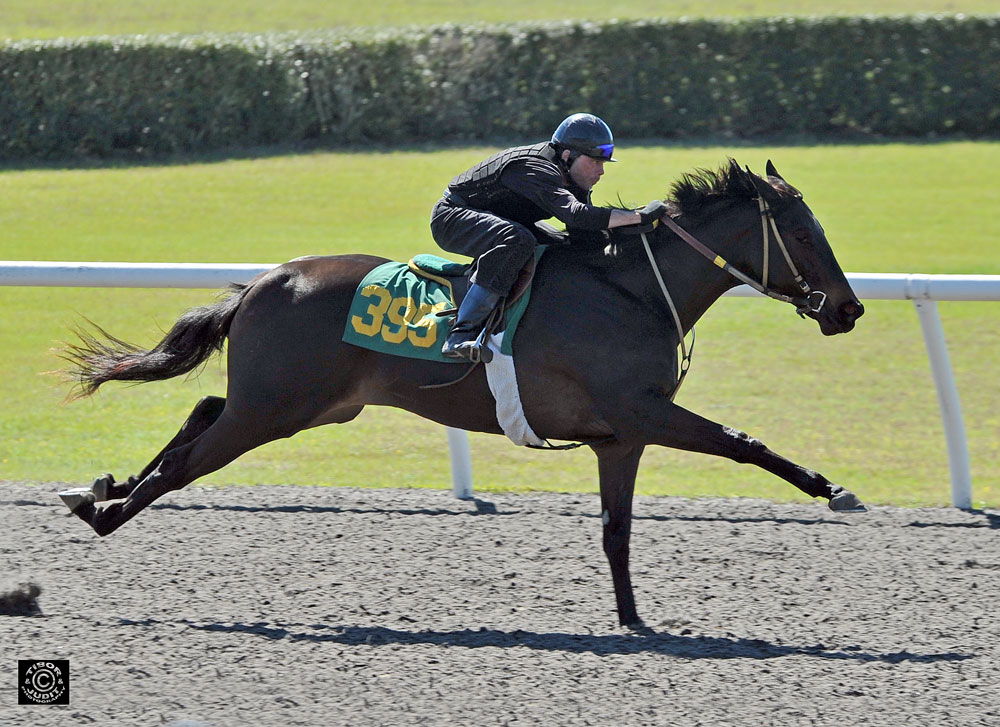
Illuminant (above) was also by a young, unproven sire at the time, Quality Road. She had a really nice breeze [:10 1/5], but she definitely had turfy action and she was very green, the combination of which I feel must have dissuaded some buyers. What really caught our eye about her preview was that it looked as though the saddle slipped backwards during her breeze, which likely either impaired her from exhibiting her full ability or it was the cause of her somewhat erratic course. Physically, she was a more streamlined, sleek, turf-looking type, so again, that likely deterred some buyers from being too high on her. Thankfully, she developed into a gorgeous filly and she proved her Grade I quality when it mattered.
Q: A pair of current Eclipse standouts-recent El Camino Real Derby heroine Paved ($320,000 OBSMAR) and ‘TDN Rising Star’ Montauk ($850,000 OBSAPR)-were both acquired at 2-year-old sales in Ocala last spring. Same question about them.
AW: Neither of these were diamonds in the rough, as we paid serious dough for both, but it is a relief to know that each of them has given some indication that they’re the real thing on the racetrack.
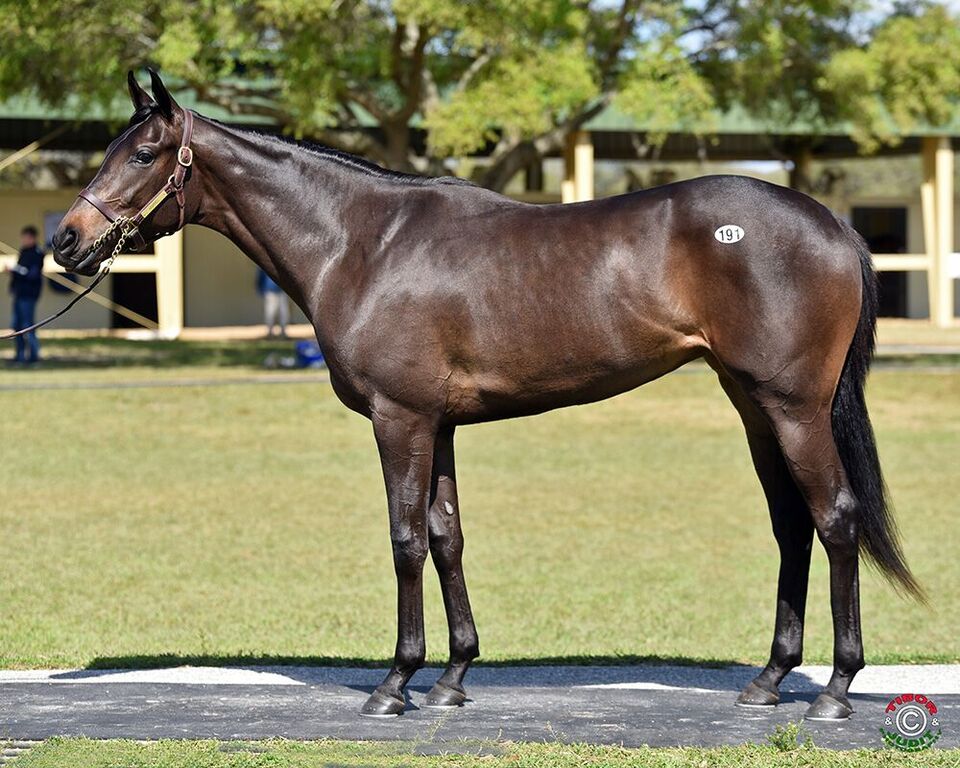
Paved (above) was a classic case of a horse doing something at a 2-year-old sale that it wasn’t meant to do. She was a very backwards 2-year-old in that she was tall, long and somewhat gawky and she’s bred to be a stone-cold route filly on the turf. So, for a filly like her to go an eighth of a mile in :10 1/5 and look smooth doing it when we knew that was the last thing she wanted to be doing, she basically defied logic in her breeze. On the shank, she was almost the spitting image of Illuminant. I remember vividly texting [trainer] Michael McCarthy the second I laid eyes on her: Hip 191–Illuminant’s doppelgänger.
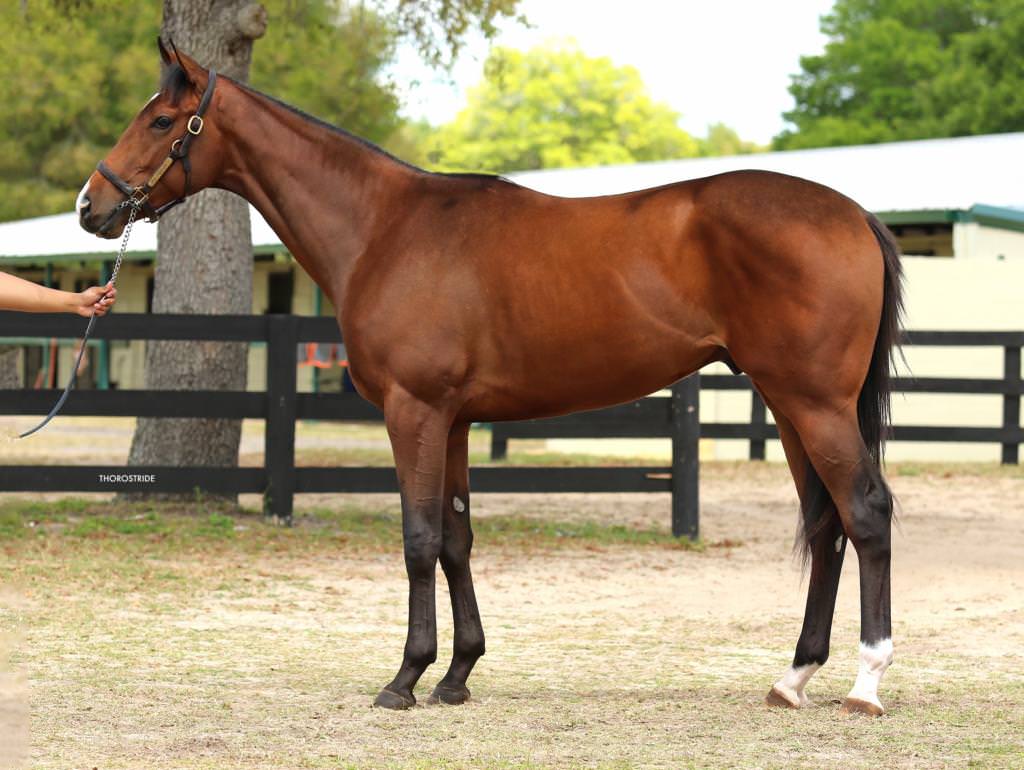
Montauk (above) was a complete standout at OBS April last year. We believed that of the hundreds and hundreds of 2-year-olds that had breezed in prior sales to that point, that his [breeze in :10 1/5] was hands-down the single most impressive of the entire sales season. It didn’t take a genius to arrive at that determination or to see what a beautiful specimen he was or that he had a royal pedigree, but it did require some creativity, vision and guts to pursue him at such a high price tag because he’d gotten cast in his stall after his breeze and his entire left leg was blown up and infected. The group we put together went to great extent to investigate that leg and to protect ourselves and we felt like we had our bases covered. While we are all thrilled with his dominant debut win in October–we think he’s a supremely talented colt–he still has a lot of work to do to make good on his purchase price.
Q: It really has become a lot more common to see high-profile owners partnering up at the sales. Eclipse’s GI Belmont S. winner Tapwrit is campaigned in partnership and the aforementioned Montauk also has several other owners involved. Can you discuss this trend?
 AW: The competition is so fierce at the top of the market and the market for quality or what people perceive to be quality horses. These types are commanding such a premium that in order for owners to attempt to minimize risk in some respect it is wise to partner up. It is so wild to see how the makeup of ownership has changed in recent years and it is really a testament to the innovative mind of the pioneer of the partnership concept, Cot Campbell. To see such titans of industry like Coolmore, WinStar, Stonestreet, et al. forming strategic alliances in an effort to secure the best of the best prospects is something I don’t think anyone could have conjured five-to-seven years ago.
AW: The competition is so fierce at the top of the market and the market for quality or what people perceive to be quality horses. These types are commanding such a premium that in order for owners to attempt to minimize risk in some respect it is wise to partner up. It is so wild to see how the makeup of ownership has changed in recent years and it is really a testament to the innovative mind of the pioneer of the partnership concept, Cot Campbell. To see such titans of industry like Coolmore, WinStar, Stonestreet, et al. forming strategic alliances in an effort to secure the best of the best prospects is something I don’t think anyone could have conjured five-to-seven years ago.
I think there are several layers to why this trend is so prevalent. One is that from strictly an action and experience angle, owners have come to realize that they have just as much fun and devote just as much emotion whether they own 100% of a horse or a smaller equity share. The thrill is the same, and if you are connected with people you enjoy being around, it amplifies the fun by being able to share it with others.
From an economic perspective, minimizing risk in what is perhaps the riskiest venture anyone can ever endeavor is the name of the game. For those owners looking to play at the top levels, you’re better off stretching your capital out among multiple horses rather than putting all of your eggs in one or two baskets. It makes sense.
That said, it’s made it even that much more difficult to compete and knock heads with the heavyweights at the sales and in the private market, but it makes it all that much more gratifying when you beat them when you step into the ring. It’s a very healthy, competitive market and I think it’s good for the game.
Q: Are there any freshman sires that you’re particularly excited about this year?
AW: Based on what I observed at the yearling sales, two that I give the most legit chance of proving real are Verrazano and Cairo Prince. Pound for pound, I’d say they had consistently the best yearlings on offer throughout the yearling sales season. For a slightly under-the-radar one, I believe that Strong Mandate may make some noise.
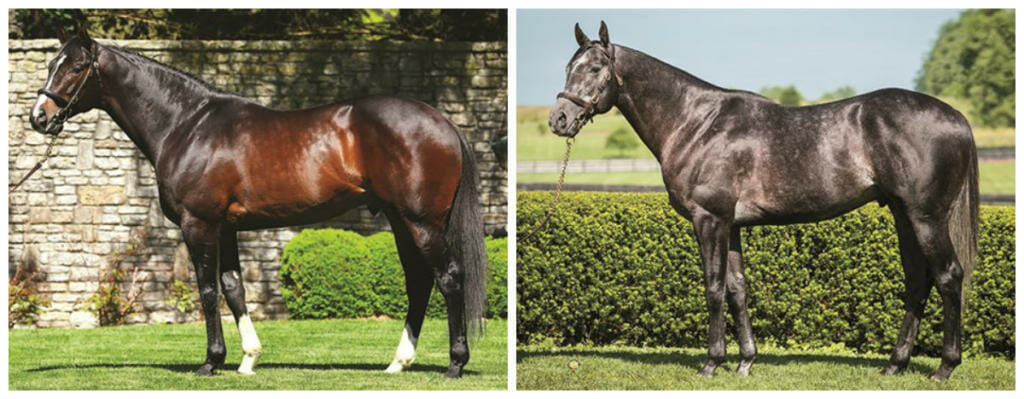
Q: Best place to unwind after a long day at the sales in Ocala?
AW: If I have the energy to do anything other than grab some food and head back to my hotel room to get back to work to prepare for the next day, I’m a Gators guy. Solid, reliable, tasty bar food and comfortable booths with clear viewing to sports games on TV with quick service is what I’m all about. And, for a sports bar, they pour a pretty good and stiff martini, which is key.
